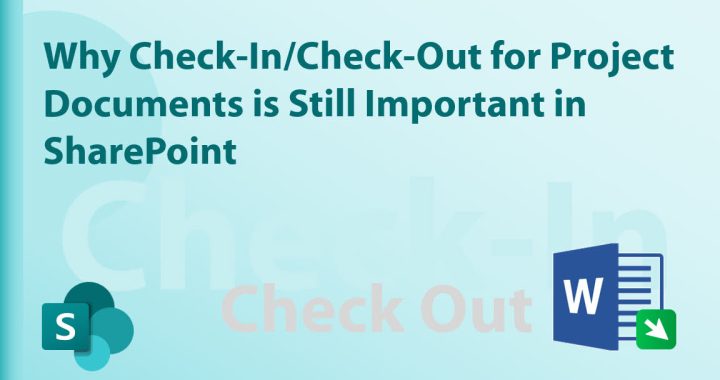
Colleagues in our company often ask me why I recommend using metadata over managing folders and sub-folders in a SharePoint document library. I have been using SharePoint for many years now in projects and programs and for this question I have a good response. This article answers this question and offers you an overview of the advantages of tagging documents and list entries with metadata versus simply using folders to organize and navigate through documents in SharePoint document libraries and lists. Curious? Then read on quickly and learn how to use SharePoint Online for project management even more efficiently.
Why I Recommend Using Metadata Over Managing Folders in a SharePoint
I often see novice SharePoint users creating folders in document libraries. No wonder, if you know only shared drives and you don’t know there is a better way to handle documents in SharePoint. Colleagues in our company often ask me why I recommend using metadata over managing folders and sub-folders in a SharePoint document library. You will get the answer a few paragraphs further down. But first, I present the result of an interesting study.
If you’re the person to meticulously file your emails in various folders, e.g. for each client, stop, says a recent study from IBM Research. By analyzing 345 users’ 85,000 episodes of digging through old emails in search of the one they needed, researchers discovered that those who did no email organizing at all found them faster than those who filed them in folders. The same can be observed with general file repositories in Windows Explorer.
By using search capabilities of their computer programs, the non-organizers could find the email they needed just as easily as folder filers. They also didn’t have to spend any time filing email in folders, putting them ahead overall. The same situation can be transferred to SharePoint.
Folders in SharePoint are definitely not best practice and lead to many disadvantages when handling SharePoint data. Metadata is the way to go in SharePoint.
Stop Organizing Your E-mail, Says Study
Folders Opposed to Properties
Folders are very limited, as you can only file a document in one place, which leads people to have more issues finding it. However, if you use properties (metadata) instead of folders, this allows multiple types of categorization and allows an item to view in the hierarchy in multiple places, effectively it gives users several ways to navigate.
I know it’s not easy adjusting to a new way of working. It’s been the same for me. User resistance to change in working practices can be overcome with a bit of education and to show what the big advantages are to work with properties and the disadvantages when working with folders.
Disadvantages of using folders in SharePoint document libraries:
- Folders only allow for adding a single dimension of information
- It’s hard to change the folder structure, while changing metadata is easy.
- You can’t sort & filter: Since your files are buried in the folders, you can’t really benefit from sorting and filtering capabilities of document library headers (unless, of course, you are just sorting and filtering in the particular folder).
- Just one view: With folders, you get one view: the folder view. Using metadata, you can create an unlimited number of views by whatever properties you have set up (i.e. organize documents by date, by customer, by project, etc.) So, the document browsing experience is much better-off.
- A nested folder structure is only known to the person who created it. Also, too many sub-folders tend to “hide” things.
- URL length limitation: SharePoint adds all folder and sub-folder names to URL. Overall URL length is limited to around 255 characters. You are out of luck if you create too many sub-folders.
- File URL: Moving a file from one folder to another means change of file URL. This is not the case when you change a metadata field.
- Security: Maintaining Security by folders in SharePoint is an administrative nightmare. Don’t even think about doing it!
- User experience: User Experience (navigation, finding the documents) just stinks with folders.
- File duplication: With folders, you can deposit multiple copies of the same file into different locations—not a good thing when you try to organize documents and data in the first place!
- Lost documents: You can “lose” documents when placed in the wrong folder. Also, too many sub-folders tend to hide things, making it impossible or to time-consuming for users to find a particular document.
Perhaps you will now argue: Yes, but even with folders I can find my documents very quickly. I only need the excellent SharePoint search engine and with a smart search I can find my document immediately. Yes, that is true, but the other disadvantages with folders remain. You can find more about SharePoint Search in this article: How to Search Smart in SharePoint Online.
When You May Use Folders
When migrating documents from a file shared drive into SharePoint, the easiest approach is to copy and paste all the documents, including the existing folders, into a document library. It is therefore quite tempting to continue working like this in SharePoint. But as soon as the naming conventions of your folders carry meaning, or you need or edit the documents very often, it might be a good idea to think about converting the folders into metadata. However, if these folders are rarely used, it is best to leave them alone. Save yourself the effort!
Here You Can Find More Knowledge
Would you like to learn more about how to make your projects more successful with SharePoint? Save time and money and get firsthand experience with my book “SharePoint Online for Project Management“. It takes you an important step further!
Do you know somebody who might be interested in this article? Then simply forward it or share it. Thank you!




